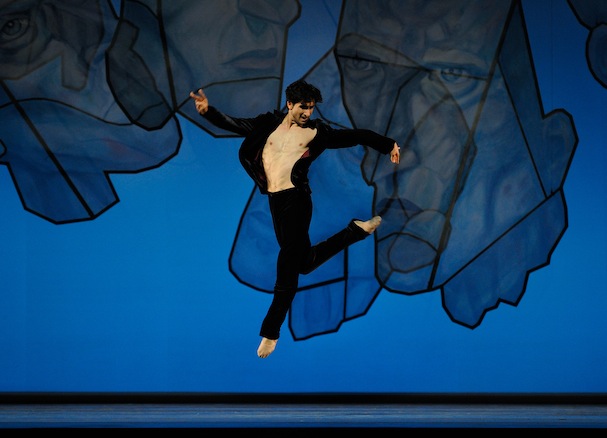
The sorrows of Shostakovich
San Francisco Ballet’s Program Five is advertised as The Shostakovich Trilogy. And rightly so, it presents three ballets choreographed by Alexei Ratmansky using works from Shostakovich’s enormous musical oeuvre. It’s a wonderful program, steeped in the traditions of classical ballet, choreographed with varying degrees of abstraction and executed with precisely detailed technique and unbridled vigor.
Ratmansky, the current American Ballet Theater artist-in-residence, was born in Leningrad, now Petersburg, in 1968 under the Soviet regime. He trained at the Bolshoi ballet school but worked as a dancer in Canada and Denmark after leaving the Soviet Union in 1992 during the glasnost period. He later returned to the Bolshoi as artistic director in 2004. In 2009 he returned to the West and ABT.
The music of Shostakovich was a prominent part of Ratmansky’s early life. Shostakovich had composed under duress during the Stalin era – he was denounced twice and his work regularly suppressed – but continued to compose until his death in August 1975. For a young, musically inclined dancer the composer must have been a symbol of both individuality and artistic identity. The ballets presented during The Shostakovich Trilogy refer both to Shostakovich’s personal life as well as the regime under which he created, struggled and suffered.
The mystery of music
The evening opens with the Symphony No. 9 in E-flat Major, Op. 70. The first movement begins with a solitary dancer lit under a spot. He is joined by five men. Their movements are continuous and athletic, at times suggesting the movements of Russian men’s folk dance. Four women join the men, holding to the formality of a circle as the central choreographic motif.
The second section continues with a man and a woman performing a rather slinky pas de deux to woodwind solos. Even so, there is a quality of tender chasteness throughout their dancing. They leave the stage like thieves in the night, replaced by eight dancers. The groups change: a male soloist, then a pas de trois. Each group seems to project the same emotional question. What, the observer wonders, are they seeking?
The third section has a backdrop of red flags and line drawings of zepplins, planes, solitary men and women. A soloist, then a duet pace to woodwinds through generous, never hesitating kinetics. Sixteen dancers synchronize to the drawl of ominous brass. Sarah Van Patten and Carlos Quenedit costumed in dark colors partner each other interweaving with a group in green: Simone Messmer, James Sofranko and Taras Domitro. They are playful, gushing vitality. The music builds, the corps gathers in frantic response. The dancers form a circle, which collapses. The soloist ends the piece with a huge en tournant leap in place.
The wonder of dance
The second piece, Chamber Symphony, choreographed to Shostakovich’s Chamber Symphony (after String Quartet No. 8) is the most narrative of the ballets. And strangely reminiscent of Balanchine’s Apollo. The Man, or Shostakovich, danced by Davit Karapetyan, is weighted down emotionally, physically by the ominous drone underlying the music in the midst of a corps of dancers. His relief comes in the form of three muses – Sasha De Sola, Lorena Feijoo and Mathilde Froustey – who represent three women central to Shostakovich’s life. Each saves him, and each is lost to him.
The third work in the evening was choreographed to Shostakovich’s Piano Concerto No. 1 for Piano, Trumpet and Strings, Op. 35, the solos tastily played by pianist Michael McGraw and trumpeter John Pearson. It was a spectacular bit of theater with superlative dancing by principal dancers Yuan Yuan Tan and Maria Kochetkova, partnered by Damian Smith and Vitor Luiz, respectively. Tan with her long, elegant limbs and beautiful carriage and the remarkably petite Kochetkova with her vibrant quickness and precise jetés made striking harmony with their very different styles.
It’s hard to say what made this program so satisfying and so fascinating. But it was – a thrill for any ballet aficionado.
—Jaime Robles
The Shostakovich Trilogy continues through April 13 at the War Memorial Opera House in San Francisco. For information and tickets, call 415-865-2000.
Photo: Davit Karapetyan dances the role of the artist, Shostakovich, in Chamber Symphony from Ratmansky’s Shostakovich Trilogy. Photo by Erik Tomasson.
